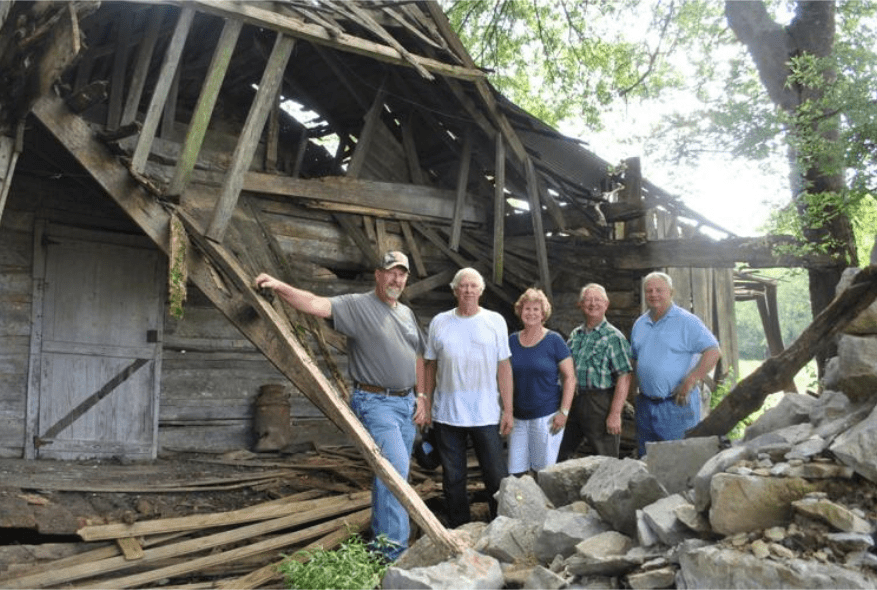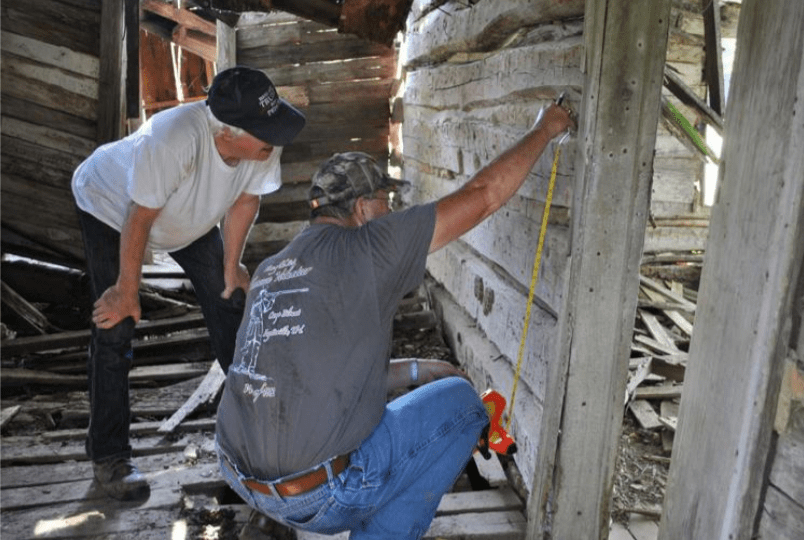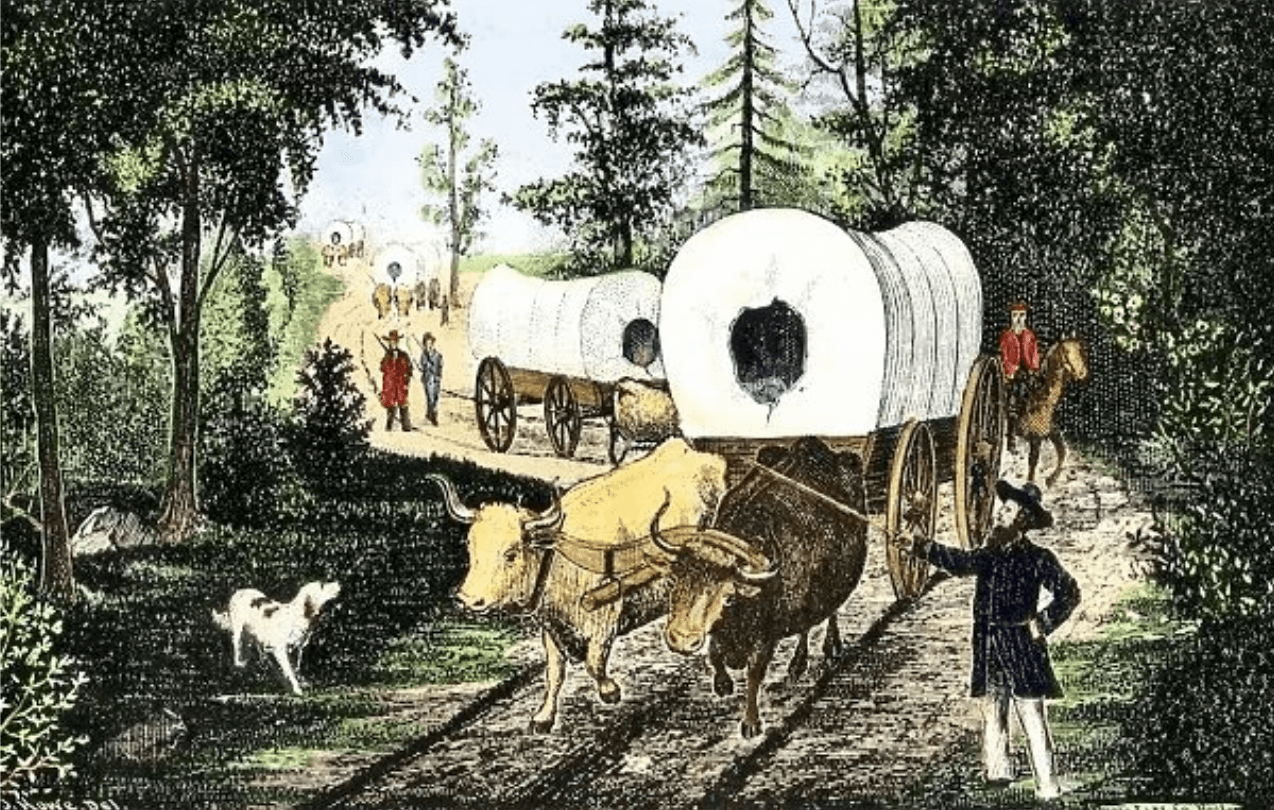- Home
- About
-
Chapters
- Regions of TNSSAR
- Andrew Jackson Chapter
- Christopher Strong Chapter
- Col. Anthony Bledsoe Chapter
- Col. Benjamin Cleveland Chapter >
- Col. Hugh Brown Chapter
- Cumberland Gap Chapter
- Forked Deer Chapter
- Governor Archibald Roane Chapter
- Hiwassee Chapter
- Isaac Shelby Chapter
- Jackson Purchase Chapter
- James Madison Chapter
- John Sevier Chapter >
- Joseph Greer Chapter
- Kings Mountain Chapter
- Lt. Andrew Crockett Chapter
- Lt. William P. Quarles Chapter
- Maj. David Wilson Chapter
- State of Franklin Chapter
- Stephen Holston Chapter
- Stones River Chapter >
- Thomas Kilgore Chapter
- Valentine Sevier Chapter
- Watauga Chapter
- Education Programs
- Color Guard
- Events
- Community Outreach
- Graves and Monuments
- For Members
- TNSSAR Store
- Ladies Auxiliary
The Greer House Rediscovered
written by Rick Laws, Joseph Greer Chapter

Image of the Joseph Greer house as depicted on the cover of the 2016 MTSU report.

The historic Joseph Greer cabin will be moved from the Gill farm near Petersburg to Camp Blount Historic Site. Pausing for a photo at the cabin are (from left) Colin Wakefield and Bill Wendt from the Joseph Greer Sons of American Revolution (SAR) Chapter and members of the Gill family, Gloria Gill Meadows, Warren Gill, and Alan Gill. Courtesy of the Elk Valley Times -
An Idea is Born

Bill Wendt (at left) and Colin Wakefield, members of the Joseph Greer Sons of the American Revolution (SAR) Chapter, measure logs in the historic Joseph Greer cabin on the Gill farm near Petersburg. Working with the Gill family, the SAR plans to restore the cabin and move it to Camp Blount Historic Site near the Elk River in Fayetteville. Courtesy of the Elk Valley Times significance of the Greer house, expressing the belief that concerted efforts can ensure its preservation and contribute to the profound historical narrative of Lincoln County (Newspaper, 2018).
The Decision to Relocate the House

Cumberland Road Wagons - Stretching from Cumberland, Maryland, to St. Louis, Missouri, the Cumberland Road was the first road funded by the U.S. federal government, approved by congress in 1806. It was a popular route for commercial trade in the 1840s by Conestoga wagons.
- GOBLET, N. (2006). Moving Historic Buildings: One Means of Preservation. Cornell University. Ithaca: Cornell University. Retrieved from https://ecommons.cornell.edu/items/072cbbe5-ea52-462a-9657-62997a222131/full
- MTSU. (2016). er Log Cabin Lincoln County. Middle Tennessee State University, Center for Historic Preservation. Murfreesboro, TN: Middle Tennessee State University, Center for Historic Preservation. Retrieved from https://kipdf.com/greer-log-cabin-lincoln-county-tennessee-history-preservation-options-spring-2016
- TOMASZEK, T. (n.d.). The Issue of Authenticity in Reconstruction of Wooden Building as an Interpretation of the Historical Site",- Case Studies of Log Cabins from Tennessee State, USA, Advances in Science and Technology. 109, pp. 59-60,. doi:https://doi.org/10.4028/www.scientific.net/AST.109.59
|
Questions? Contact Us.
info@tnssar.org
|
The Tennessee SAR is a proud member of
the SAR Southern District. Click the image to visit their site.
|
- Home
- About
-
Chapters
- Regions of TNSSAR
- Andrew Jackson Chapter
- Christopher Strong Chapter
- Col. Anthony Bledsoe Chapter
- Col. Benjamin Cleveland Chapter >
- Col. Hugh Brown Chapter
- Cumberland Gap Chapter
- Forked Deer Chapter
- Governor Archibald Roane Chapter
- Hiwassee Chapter
- Isaac Shelby Chapter
- Jackson Purchase Chapter
- James Madison Chapter
- John Sevier Chapter >
- Joseph Greer Chapter
- Kings Mountain Chapter
- Lt. Andrew Crockett Chapter
- Lt. William P. Quarles Chapter
- Maj. David Wilson Chapter
- State of Franklin Chapter
- Stephen Holston Chapter
- Stones River Chapter >
- Thomas Kilgore Chapter
- Valentine Sevier Chapter
- Watauga Chapter
- Education Programs
- Color Guard
- Events
- Community Outreach
- Graves and Monuments
- For Members
- TNSSAR Store
- Ladies Auxiliary
